
Glooko is excited to share that our digital health platform for people with diabetes and related chronic conditions is compatible in the United States with Insulet Corporation’s Omnipod® 5 Automated Insulin Delivery (AID) System.
The automated insulin delivery system, which is composed of the Omnipod 5 App, the Pod and has Dexcom® G6 Continuous Glucose Monitor (CGM) System integration, received FDA clearance for use by individuals ages 2 and older with type 1 diabetes in 2022.
As the first tubeless AID system with smartphone control* in the U.S., Omnipod 5 integrates with the Dexcom G6 CGM System to automatically adjust insulin, help protect against highs and lows in glucose levels**, and simplify life for people with diabetes. The system’s innovative Pod uses SmartAdjust™ technology that continuously and automatically regulates insulin delivery based on a patient’s customized Target Glucose.
“With the many benefits provided by the Omnipod 5, we’re thrilled it’s compatible and available to Glooko users in the U.S.,” said David Conn, Glooko’s Executive Vice President of Partnerships and Alliances. “Our partnership with Insulet allowed us to be compatible from launch with this innovative new AID system designed for people looking to better manage their diabetes.”
Through our integration with Insulet, patients using the Omnipod 5 can connect their system to Glooko and upload their data from home via a cloud connection, expediting the time spent with healthcare providers. Healthcare providers can review the data uploaded and view standardized, comprehensive reports in the Glooko dashboard to help gain insights and make decisions to optimize care.
“The team at Insulet appreciates the support Glooko provided to make the launch of the Omnipod 5 possible and successful,” said Dr. Trang Ly, MBBS, FRACP, Ph.D., Senior Vice President and Medical Director, Insulet. “This System has been life-changing for so many people living with type I diabetes and we look forward to continuing to see its impact.”
Along with the Omnipod 5, the Glooko platform is also compatible with Insulet Corporation’s Omnipod DASH®.
At Glooko, we’re continuously increasing the number of devices that are compatible with our digital health platform, and over 3 million users around the globe have benefited in managing their health with our tools. We’re currently compatible with a majority of global diabetes and health monitoring devices on the market, which gives patients and their healthcare providers flexibility in managing their diabetes and related chronic conditions.
*For a list of compatible smartphone devices visit omnipod.com/compatibility
**Study in 240 people with T1D aged 6 – 70 years involving 2 weeks standard diabetes therapy followed by 3 months Omnipod 5 use in Automated Mode. Average time with high blood glucose in adults/adolescents and children, standard therapy vs. 3-month Omnipod 5: 32.4% vs. 24.7%; 45.3% vs. 30.2%. Median time with low blood glucose in adults/adolescents and children, standard therapy vs. 3-mo Omnipod 5: 2.0% vs. 1.1%; 1.4% vs. 1.5%. Brown et al. Diabetes Care (2021).
Study in 80 people with T1D aged 2 – 5.9 years involving 2 weeks standard diabetes therapy followed by 3 months Omnipod 5 use in Automated Mode. Average time in Target Glucose range (from CGM) for standard therapy vs Omnipod 5 = 57.2% vs. 68.1%. Average time in Target Glucose range (12AM -< 6AM) from CGM in standard therapy vs. Omnipod 5 = 58.2% vs 81.0%. Average A1c in standard therapy vs. Omnipod 5 = 7.4% vs. 6.9%. Median time with low blood glucose from CGM: standard therapy = 3.43% vs. 2.46%. Sherr JL, et al. Diabetes Care (2022).
MKT-0358 01
![]()
 Food is a critical component in the management of diabetes.
Food is a critical component in the management of diabetes.
People with diabetes can use the Glooko mobile app, available in the App Store and Google Play Store, to easily log their food intake and keep a historical account of how food affects their chronic condition.
The data from daily meals can be viewed alongside data from compatible diabetes and health monitoring devices, medications and insulin to reveal trends and patterns to better understand what is affecting a person’s diabetes
Tracking food consumption in our digital health app can be handled in multiple different ways, including by searching the food database, using voice capture or scanning a barcode.
-
Database Search: Manually search for a generic or branded food item in the Glooko mobile app by typing in its name to track it. Learn how to use this feature…
-
Voice Capture: Speak the name of the food item that should be added to the Glooko mobile app’s food tracker. Explore how to use this unique functionality that is not available in other leading food tracking apps…
-
Barcode Scanner: Use the camera of a smartphone to scan the barcode of a food item to track it in the Glooko mobile app. See how to take advantage of this feature…
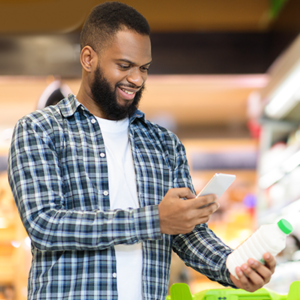 The Glooko mobile app simplifies tracking food consumption while allowing users to explore nutrition facts, including carbohydrates, calories, fats and proteins.
The Glooko mobile app simplifies tracking food consumption while allowing users to explore nutrition facts, including carbohydrates, calories, fats and proteins.
Frequent users of the food tracker can also create personalized custom food entries of their favorite meals, so they don’t need to re-add portions multiple times.
“The food tracker feature in our mobile app allows users to see how the food they’re consuming each day may affect their diabetes,” said Glooko Chief Product Officer Ed Marshall. “Being able to see all the data in one place gives users the ability to understand how they’re doing and make informed decisions about their health.”
![]()
The Glooko mobile app and its food tracker feature is also constantly evolving to meet the needs of our global users.
To better support users in the U.K., France, Germany and Spain last year, we added unique regional food items that are searchable in British English, French, German and Spanish to our connected care app.
For handy ways on how to use the food tracker, follow along with healthy eating and living tips from Glooko’s resident dietitian, Bridget Wood, RD, LD, CDCES.
MKT-0417 01

Season’s Greetings!
As we reflect on the past year, I’d like to take a moment to sincerely thank you, our customers, partners, friends and families for your continued partnership and support. While changing external market dynamics continued to present new challenges and new opportunities – what did not change was our commitment to our mission. As we look ahead to 2023 we are excited to increase our impact and to take our solutions to the next level, pushing the envelope of digital health to deliver the strongest positive patient outcomes for people with chronic conditions. We have many things to be thankful for, and several exciting new initiatives to share with you in 2023.
Wishing you a very happy & healthy holiday, and we look forward to our continued partnership in the new year.
Warmest holiday greetings,
Russ Johannesson
Chief Executive Officer
Glooko
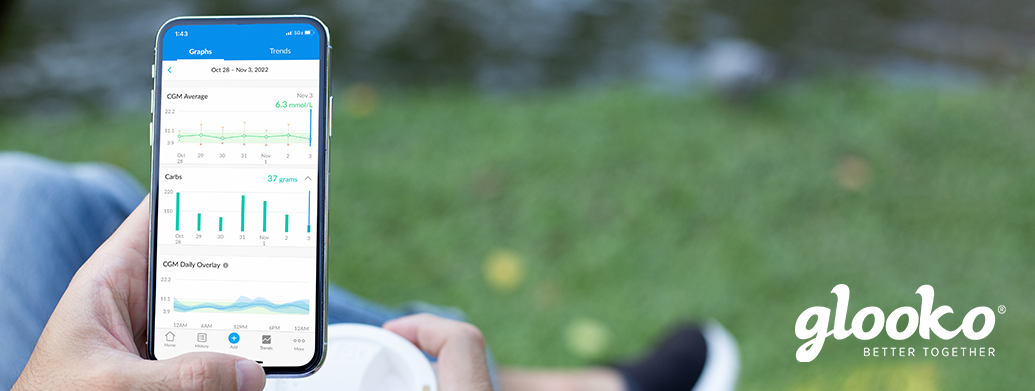
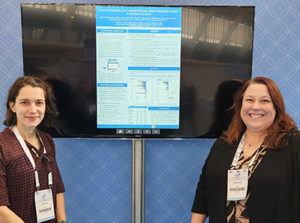 Glooko, a leading provider of intelligent, connected care solutions and remote patient monitoring (RPM) for people with diabetes and related chronic conditions, presented positive data from two recent studies on remote patient monitoring at the 2022 IDF World Diabetes Congress.
Glooko, a leading provider of intelligent, connected care solutions and remote patient monitoring (RPM) for people with diabetes and related chronic conditions, presented positive data from two recent studies on remote patient monitoring at the 2022 IDF World Diabetes Congress.
The first study presented by Team Glooko at the Congress, Cost and Outcomes of a Diabetes Remote Patient Monitoring System: A Simulation Analysis, was the company’s inaugural study using a health economics and outcomes research (HEOR) simulation model. In a randomized controlled trial of RPM and digital therapeutics (DTx), the intervention resulted in significantly improved HbA1c in patients with type 2 diabetes (T2D). Incorporating these results into a microsimulation model of longer-term complications, mortality and costs demonstrated the potential for RPM and DTx to elicit health gains and cost savings among people with diabetes.
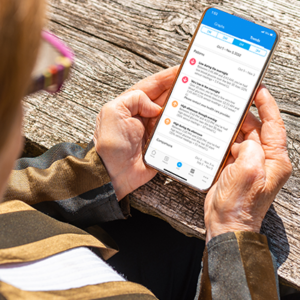
The second study presented by Team Glooko, The Impact of Remote Patient Monitoring on Glycated Hemoglobin for Type 2 Diabetes: A Randomized Controlled Trial, demonstrated that a comprehensive 24-week RPM diabetes management program was more effective in improving HbA1c compared to usual care for adults with T2D.
These studies further showcase the clinical and economic benefits of the Glooko platform, which is sold to healthcare providers globally, and available for free as a mobile app to patients.
Team Glooko will continue to highlight the benefits of our connected care platform for diabetes and related chronic conditions at industry events in 2023.
MKT-0413 01
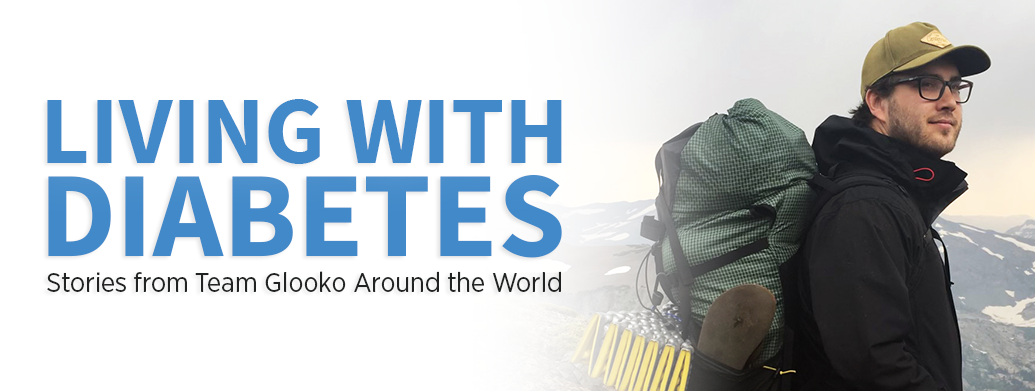
In honor of American Diabetes Month, we’re sharing stories of Team Glooko members who are living with diabetes or helping a family member who is impacted by the chronic condition.
On September 11, 2001, Phil Krieg, the global head of customer support and supply chain for Glooko, was diagnosed with type 1 diabetes.
While he’s only been at our connected care company for two years, he had always wanted to work at Glooko and was passionate about joining to further our mission since he’s been a long-time user of our app.
In his role, he works directly with people with diabetes and in many situations, the parents of children with diabetes, to help solve their issues. In these moments, it can be an especially scary time for parents.
“Empathy is key in my position,” said Phil. “I work closely with the users I’m supporting to work through any problems they’re facing as quickly and efficiently as possible.”
Leading the support team from California, he’s able to easily collect and share feedback from customers on the design of Glooko with the product development team, who is always willing to take new ideas and work them into fruition to further enhance the connected care solution.
And as one of the many people on Team Glooko living with diabetes who uses the mobile app on a daily basis, his mission-driven nature goes into the product design as well.
“I’m always looking for ways to improve our app and make it better for users, like myself,” said Phil.
Hear his story.
MKT-0407 03
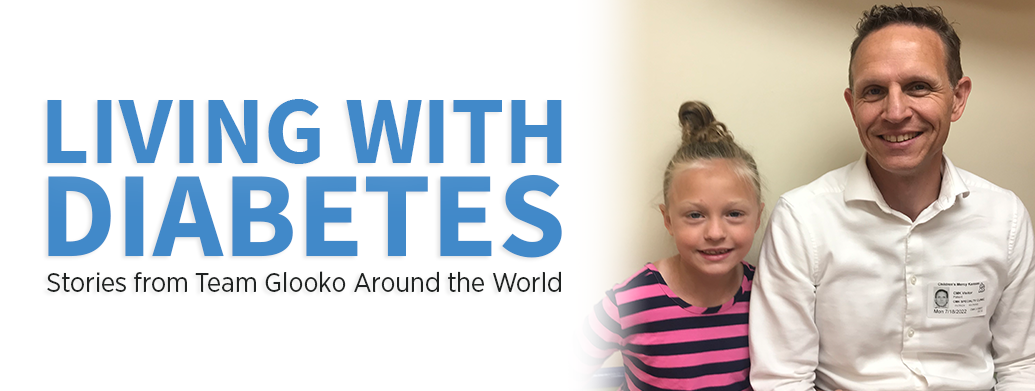
In honor of American Diabetes Month, we’re sharing stories of Team Glooko members who are living with diabetes or helping a family member who is impacted by the chronic condition.
As a senior account manager at Glooko for the past 2.5 years, Patrick Watkins has helped hospital systems, healthcare providers and clinics maximize their functionality and take full advantage of what our digital health platform has to offer their patients with diabetes and related chronic conditions.
While Patrick himself isn’t living with diabetes, his daughter, Nuala, has been living with type 1 diabetes for over six years. Through the use of a closed loop system, the Glooko app and telehealth appointments, Patrick and his wife keep Nuala safe and healthy like any other child.
The duo, who act as JDRF ambassadors, are also dedicated to ensuring that other families know that their child, newly diagnosed with diabetes, will lead a healthy life and acclimate to living with the condition.
In Patrick’s role at our connected care company, he’s able to understand what his customers are faced with from both the patient and caregiver perspective due to his experiences at home. He’s also able to synthesize the various needs of providers, people with diabetes and caregivers to our product development team and ensure the best experience for all users of our app and platform.
“I really appreciate working at Glooko and being among so many people with diabetes,” said Patrick. “It’s a special place since so many people have the insights from using the app in their daily lives, so they’re constantly able to help build an even better product.”
Listen to his story.
MKT-0407 02
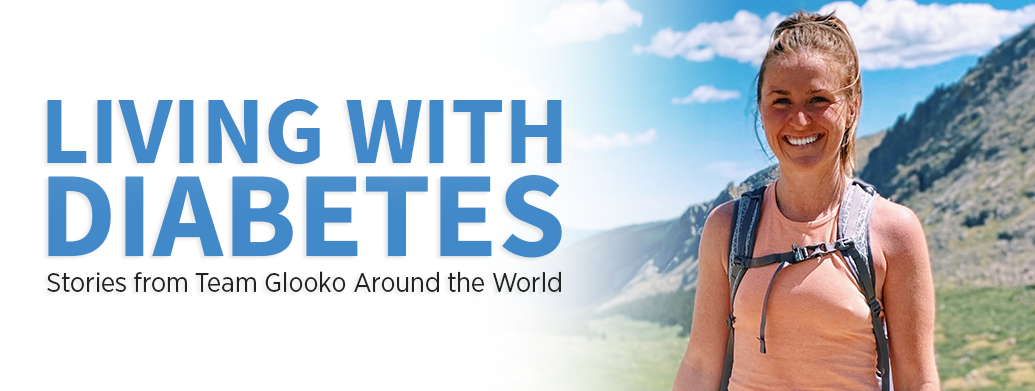
In honor of American Diabetes Month, we’re sharing stories of Team Glooko members who are living with diabetes or helping a family member who is impacted by the chronic condition.
Hadley Horton, a partner manager at Glooko, was diagnosed with type 1 diabetes in November of 2009.
When she’s not staying active to keep her blood sugar stabilized, she acts as an advocate for people with diabetes. She believes those with diabetes understand and are aware what it means to live with the condition best. In the past, she’s mentored youth with diabetes and their peers to remind them they’ll lead a normal life just like she has.
Based in Denver, Colorado, her role at our connected care company allows her to collaborate with teams across Glooko and our partner, Insulet, on how to expand and improve our digital health platform.
“In order to have a successful partnership, you need to work with everyone from product developers to patients,” said Hadley. “My role has given me a new perspective into the digital therapeutics space, as well as understanding of the broader diabetes industry.”
With her knowledge from working alongside partner companies, living with diabetes and using the Omnipod 5 in her daily life, she’s able to lend valuable insights into the continuous development of the Glooko app to enhance our product for users around the world.
Listen to her story.
MKT-0407 01
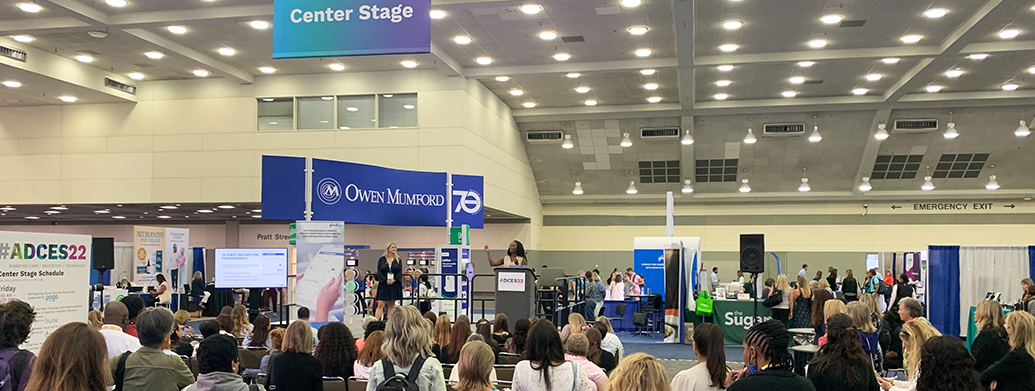
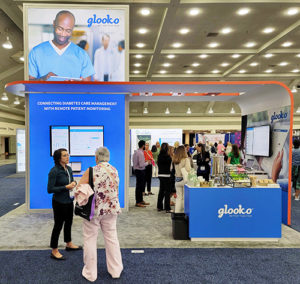 Recently, Glooko exhibited at ADCES22, the premier annual conference from the Association of Diabetes Care & Education Specialists covering all things diabetes care, education and technology.
Recently, Glooko exhibited at ADCES22, the premier annual conference from the Association of Diabetes Care & Education Specialists covering all things diabetes care, education and technology.
Not only was it refreshing to meet our customers, colleagues and partners again in-person, a key focus of the event was on how to better help patients with diabetes during these changing times.
At the event, our very own registered dietitian and certified diabetes care and education specialist, Bridget Wood, shared during a Center Stage session how people living with diabetes can use the food tracker functionality within the Glooko mobile app to log their daily meals via search, voice capture and barcode scanner. The very handy food database has over 500,000 individual items, including unique regional food items from Germany, the U.K., Spain and France. Wood also highlighted how our mobile app has the capability to simultaneously add multiple lifestyle events, like medication, insulin, exercise and notes, which can be viewed alongside glucose data to reveal trends and patterns.
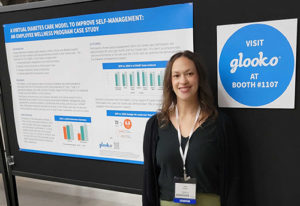 Along with Cecelia Health, Glooko presented a case study on how a virtual employee wellness program comprised of our digital health app for people with diabetes and virtual coaching can generate high levels of participation and improve patient outcomes.
Along with Cecelia Health, Glooko presented a case study on how a virtual employee wellness program comprised of our digital health app for people with diabetes and virtual coaching can generate high levels of participation and improve patient outcomes.
During a Coffee Talk, Gene Arnold from Johns Hopkins Medicine and Gary Scheiner from Integrated Diabetes Services participated in a lively discussion with Glooko Chief Medical Officer Dr. Mark Clements. They discussed the clinical challenges faced when trying to educate people with diabetes without accurate data, which Glooko data visualizations to use and how clinicians are incorporating remote patient monitoring and population health management into their practices.
For those that missed it live, watch the conversation below.
MKT-0086

This month, Academy™, a free educational platform Glooko developed in conjunction with the Association of British Clinical Diabetologists (ABCD)/Diabetes Technology Network UK (DTN-UK) and DigiBete, launched a new training module on connected pens used by people with diabetes. This marks the eighth module on the CPD accredited platform for healthcare professionals in the U.K and Ireland to improve their knowledge of diabetes technologies.
The new course educates healthcare professionals on the benefits of connected pens, the different types of smart insulin pens available and how the data generated by these pens can be used in clinical practice to support people with diabetes.
“Smart pens are another emerging tool that can help us get a more complete picture of what is causing the ups and downs that are so frustrating for people living with diabetes,” said Dr. Pratik Choudhary, professor of diabetes, Leicester Diabetes Centre, University of Leicester, UK and chair of DTN-UK. “We’re really pleased to launch the latest course in Academy™ to help support healthcare providers in making the best use of this technology.”
For people with diabetes, connected pens allow accurate and up-to-date recording of the timing and doses of insulin administration. Healthcare teams supporting patients using connected pens are able to gather a more complete picture of their patients’ diabetes therapy and can help understand causes of high or low blood glucose readings. This innovative connected pen technology combined with digital health platforms packed with data, like Glooko, can enable care teams to make informed decisions around insulin dosing for their patients.
“Connected pens are the latest exciting diabetes technology development, designed to enable integration of both glucose and insulin data to facilitate more detailed and informed discussions in the diabetes clinic,” said Dr. Emma Wilmot, consultant diabetologist, University Hospitals of Derby & Burton; founder, ABCD/DTN-UK; and honorary (clinical) associate professor, University of Nottingham.
Healthcare professionals in the U.K. and Ireland who are interested in advancing their knowledge of the latest diabetes technologies can register for Academy™ for free.
MKT-0349 01

Mardi 31 mai, Glooko organisait un webinaire sur le thème « Passage dans le droit commun de la télésurveillance » animé par le Pr. Charles Thivolet, diabétologue directeur et co-fondateur du centre du diabète DIAB-eCARE aux Hospices civils de Lyon. Référentiel de la Haute Autorité de Santé (HAS), modalités de mise en place… Quels sont les points clés à retenir ? Quelles sont les conséquences en pratique ? Où en est-on aujourd’hui ?
LE PARCOURS DU DIGITAL DANS LE DIABÈTE, EN FRANCE
Le programme ETAPES a été précédé par des études cliniques, notamment françaises comme Diabeo® ; puis des études cliniques multicentriques randomisées comme TeleDiab-1 ou TéléSage. Tout ceci a contribué à l’élaboration du programme ETAPES. L’idée était de réfléchir sur des parcours avec cinq maladies chroniques pour la télésurveillance (insuffisance cardiaque, insuffisance rénale chronique, asthme, diabète et arythmie), dans un cadre identique (une population cible, une plateforme répondant à un cahier des charges, des forfaits, un télésuivi ou accompagnement thérapeutique, une évaluation à 6 mois). Les objectifs étaient de réduire le nombre d’hospitalisations, de contrôler et/ou d’améliorer la prise en charge en facilitant l’accès aux spécialistes, d’améliorer la qualité de vie et d’améliorer le soin.
QUE RETENIR DU PROGRAMME ETAPES ?
Les avantages
L’activité de la télésurveillance a été formalisée, et c’est unique en Europe. L’expérimentation a permis la reconnaissance d’une activité de soins comme étant complémentaire à l’offre de soins traditionnels.
Les limites
Il n’y a pas de prise en compte des spécificités des cinq pathologies concernées et certaines ne correspondaient pas parfaitement aux modalités proposées. De plus, il n’y a pas de prise en compte de la charge en soins qui est différente selon les situations (grossesse, adolescence, mise sous pompe…).
Les messages à retenir
-
La télésurveillance est idéale pour maintenir le contact et améliorer le suivi des personnes avec un diabète traité par multi-injections ou par pompe.
-
La pandémie à Covid-19 a accéléré le recours au soin digital avec l’élargissement des critères d’inclusion (suppression du critère HbA1C).
-
La prise en charge multi-professionnelle s’est imposée, avec notamment la reconnaissance de l’apport des diététiciens.
DANS QUELLE MESURE A-T-ON AVANCÉ POUR L’APRÈS ETAPES ?
D’après le référentiel SFD 2022.
Les constats
Le premier est toujours cette difficulté d’accès aux soins spécialisés en fonction de la localisation géographique et de la démographie médicale qui n’est pas forcément adaptée aux chiffres de prévalence du diabète qui augmente (que ce soit le type 2 ou le type 1).
La télésurveillance ne se substitue pas à la prise en charge actuelle mais apporte des bénéfices complémentaires à ce suivi.
Ce qu’il reste à faire
La télésurveillance est critique pour aborder le virage ambulatoire. Il convient de soutenir l’approche multi-professionnelle. Enfin, le référentiel pointe la nécessité d’un libre accès aux données pompes et capteurs qui doivent être inter-opérables, sécurisés, si possible sur la même plateforme, pour le suivi des personnes avec un diabète.
LES ATTENDUS DE LA TÉLÉSURVEILLANCE
Dans les recommandations HAS, il est indiqué que le numérique doit faciliter le travail des professionnels, la coordination, la pertinence ou encore la continuité des soins. Il s’agit clairement d’améliorer la qualité et l’efficience du parcours de soins afin d’améliorer la qualité de vie par la prévention des complications et une prise en charge au plus près du lieu de vie. Pour ce faire, il convient de travailler conjointement avec les organisations professionnelles et les sociétés savantes pour définir des indicateurs pertinents pour le suivi et l’évaluation.
Quels professionnels de santé ?
Les professionnels de santé doivent être formés à la pratique de la télésurveillance et à l’outil numérique. Les infirmières concernées doivent avoir une formation et une expérience d’au moins 12 mois en diabétologie. Au moins un des membres de l’équipe doit avoir une formation ETP (40 h). Les compétences de l’équipe doivent être maintenues par des formations continues.
Quel dispositif médical numérique (DMN) ?
Le DMN doit permettre la collecte de données nécessaires à la réalisation de la télésurveillance, si possible de façon automatique. Il doit pouvoir transmettre les valeurs de glucose et les données relatives à l’insuline. Il doit être en mesure d’émettre des alertes (pas trop, mais significatives : glycémie hors cible, hypoglycémies sévères, données non transmises…). Le dispositif doit par ailleurs transmettre un questionnaire de qualité de vie et permettre la transmission par l’opérateur des données de l’utilisation effective et des résultats d’utilisation en vie réelle à l’Assurance maladie.
Quels patients ?
Les patients éligibles sont :
-
les personnes atteintes d’un diabète de type 1 (DT1) de plus de 12 ans ;
-
les personnes atteintes d’un diabète de type 2 (DT2) traitées sous insuline.
Il y a une volonté de décaler l’ouverture pour le diabète gestationnel, après la fin de l’article 51, et d’avoir une réflexion sur cette pathologie ponctuelle, mais qui nécessite une prise en charge très spécifique.
Concernant les enfants de moins de 12 ans, un travail est nécessaire avec la Société Française d’Endocrinologie et Diabétologie Pédiatrique (SFEDP) et l’Aide aux Jeunes Diabétiques (AJD) pour déterminer les conditions dans lesquelles cette télésurveillance pourrait s’effectuer.
Les conditions de non éligibilité sont l’impossibilité pour le patient ou l’aidant d’utiliser un dispositif médical de télésurveillance, le refus de la part du patient de transmettre ses données, ou encore d’avoir un accompagnement thérapeutique.
Quelle prise en charge ?
Cet aspect reste en discussion. Il est proposé un forfait socle établi pour le suivi d’un patient ayant un DT1, la mise en route d’une insuline basale chez un patient DT2 ou encore le suivi d’un patient DT2 sous multi-injections. Ce à quoi pourrait s’ajouter :
-
un niveau 1 correspondant à la découverte d’un DT1 chez un patient adulte, le suivi d’un traitement par pompe à insuline, le suivi du DT1 chez un patient adolescent, ou encore les situations de déséquilibres transitoires ;
-
un niveau 2 correspondant à l’initiation et le suivi d’une pompe à insuline en boucle semi-fermée, l’initiation d’un traitement par pompe à insuline, la découverte d’un DT1 chez un patient adolescent, le suivi d’adolescents en écarts de soins ou encore la grossesse chez une femme atteinte de diabète. Il s’agit donc de situations où la charge en soins nécessite une reconnaissance du temps multi-professionnel particulier.
En pratique ?
Les organisations souhaitant bénéficier d’un remboursement par l’Assurance maladie pour les activités de télésurveillance devront faire une déclaration auprès de leur Agence Régionale de Santé (ARS).
CONCLUSION
Le programme ETAPES a mis en lumière la nécessité de passer la télésurveillance dans le droit commun.
De plus, les prérequis, les conditions d’éligibilité, de mise en place et d’évaluation ont été fixés. Certains points sont toujours en discussion, notamment les modalités de financement et la prise en compte de la charge en soins. Il s’agirait de trouver un compromis pour ne pas avoir la même rémunération pour la mise en place d’une pompe par rapport à un suivi d’une insuline basale pour un patient DT2 par exemple. En attendant, le programme ETAPES se poursuit.
MKTG-0166-FR-fr 01
 Germany
Germany  Spain
Spain  France
France